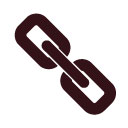
PracticeMaster Q&A: Import Data Wizard
February 2023 Tags: Import, PracticeMaster
No comments
We received a spreadsheet of potential related parties for a case. Can we import these as contacts into PracticeMaster?
The Import Data Wizard allows you to import data into any PracticeMaster file, including new contacts.
To use the Import Data Wizard
- In the Quick Launch, search for and select “Import Data Wizard.”
- Expand the Lookup Files group, select the Contact file, and click Next.
- Click Browse, select the file to import, and click Next.
- Map the columns in the import file with fields in PracticeMaster, and then click Next.
- Click Finish.
Note: PracticeMaster requires a text file containing comma-separated values to import. If your spreadsheet is in another format, such as a XLS file, you can save the file as a CSV format using Microsoft Excel or a similar application.

General Ledger Q&A: Import Bank Transactions
January 2023 Tags: General Ledger, Import, Reconciliation
No comments
Our monthly reconciliation can take some time to perform. Our bank offers a digital file with all of the cleared transactions; is there a way to import this file and match them up to my General Ledger entries?
General Ledger’s Import Bank Transactions feature uses financial files in multiple formats (.OFX, .QBO, or .QFX) to help clear your bank transactions. This allows you to match up journal entries that are already in the system against the ones in the file.
To import bank transactions
- In the Quick Launch, search for and select “Import Bank Transactions.” Alternatively, you can click the Import Bank Transactions button on the Dashboard.
- Select the financial file downloaded from your bank. Once the import is complete, you will have the option to delete the import file. The Dashboard will be displayed, with the Last Import updated.
To match imported transactions to journal entries
- On the Dashboard, click the red number next to Last Import to see a list of imported transactions.
…or…
In the Quick Launch, search for and select “Bank Account Manager,” and then click the Confirm Transactions button. - On the Matched tab, transactions from the bank that already exist in GL are shown. The match is based off of several criteria; check number, date, and amount are all taken into consideration. Transactions can be edited and unmatched from this window if necessary.
- On the Unmatched tab, new GL journal entries can be made by using the Create button.
- After transactions are matched, click Confirm.
When you start your reconciliation, all cleared entries will be selected, cutting down the amount of time that the reconciliation takes.

Spotlight: Tabs3 Device Interface
January 2021 Tags: Costs, Import, Tabs3 Billing, Tabs3 Device Interface
No comments
Often, the most common source of unbilled costs are the everyday tasks done in your office. Photocopies, faxes, phone calls, and many other tasks can easily be overlooked when entering costs for a client. Simple cost recovery methods can reclaim these expenses as needed. Many manufacturers offer devices that collect information and create an export file, which can be used in Tabs3 Billing.
The Tabs3 Device Interface software takes the export files from most collection devices and converts them into costs that can be imported to Tabs3 Billing. Additionally, it allows you to customize import settings so any standard text file can be converted, even if it is not already configured in the conversion program. This means it is very likely that you can import your task information, regardless of the device’s manufacturer.
To see if the Tabs3 Device Interface will work for you, or to order a license of the Tabs3 Device Interface for your firm, contact your local consultant or call our Sales Department at (402) 419-2200. Information about the Tabs3 Device Interface can also be found in our Knowledge Base Article R10737, “Tabs3 Device Interface Product Information,” and in R11684, “Tabs3 Device Interface Instructions.”

KB Corner: Resources for Importing Data into Tabs3 and PracticeMaster Software
March 2015 Tags: Accounts Payable, General Ledger, Import, PracticeMaster, Resources, Tabs3 Billing, Trust Accounting
No comments
Did you know that you can import data into all of the Tabs3 and PracticeMaster software? Knowledge Base Article R11506, “Resources for Importing Data into Tabs3 and PracticeMaster Software,” provides a list of resources with information regarding programs that can be used to import data in Tabs3 and PracticeMaster software including the following:
Tabs3 Billing – Importing costs from photocopiers, telephone systems, fax machines, and more.
PracticeMaster – Importing data from third-party programs, documents into document management, Platinum Exchange Connector, Outlook, and more.
General Ledger Software (GLS) – Integration with PenSoft Payroll and importing data into GLS using an ASCII data file.
Trust Accounting Software (TAS) – Importing data into TAS using an ASCII data file.
Accounts Payable Software (APS) – Importing data into APS using an ASCII data file.
Our Knowledge Base can be accessed 24 hours a day, 7 days a week, at support.Tabs3.com. You can also access our Knowledge Base while in the software by selecting Help | Internet Resources | Knowledge Base.
Recent Comments
- Tabs3 Software on Feature Article: Year-End is Fast Approaching!
- Linda Thomas on Feature Article: Year-End is Fast Approaching!
- James Hunter on Spotlight: Reorder Fees
- Tabs3 Software on Video of the Month: PracticeMaster Conflict of Interest
- Stephanie Biehl on Video of the Month: PracticeMaster Conflict of Interest

